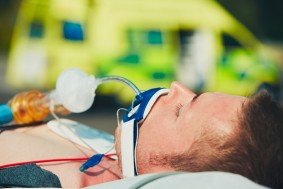Advanced Respiratory course for Nurses
₹3,000.00
Description
1. Oxygen Delivery – Physiology of Pulmonary Gas Exchange
2. Oxygen Therapy
3. Acute Respiratory Failure – Determinants of Oxygenation and Ventilation
4. Respiratory Acid Base Disorder
5. ABG Analysis – Clinical Application
6. ABG Metabolic Disorders
7. ABG Respiratory Disorders
8. Non-Invasive Ventilation
9. Invasive Ventilation
10. General Care of Ventilatory patient
11. Inhaled Bronchodilator Therapy in Mechanically Ventilated patients – part 1 & Part 2
12. Difficult Weaning – Part 1 & Part 2
13. Post-Extubation Stridor
Course Outcome :
Given a critically ill patient, the student must be able to determine the presence or absence of respiratory failure, provide for its emergency support, and have a plan of action to subsequently investigate and manage the problem. These actions must be based on a sound knowledge of respiratory physiology, pathology, pathophysiology, and pharmacology.
- Recognize the clinical signs and symptoms of acute respiratory failure
- Describe the pathophysiology of hypoxemic respiratory failure, list the 6 causes of hypoxemia, and write the alveolar-arterial gas equation
- Describe the appropriate management of hypoxemic respiratory failure
- Describe the pathophysiology of hypercapnic respiratory failure, and list the physiologic causes of hypercapnia
- Discuss the role of oxygen therapy in the treatment of hypercapnic respiratory failure
- List the differential diagnosis for an exacerbation of COPD
- Describe the appropriate management of hypercapnic respiratory failure
- Have a basic understanding of measurements of lung mechanics and pulmonary function tests
- Accurately interpret arterial blood gas analysis
- Have a basic working knowledge of the principles of pulse oximetry, capnography, and co-oximetry
- Recognize, diagnose, and perform adequate initial investigation and treatment of specific respiratory illnesses including ARDS, cardiogenic pulmonary edema, status asthmaticus, COPD, smoke inhalation, airway burns, near drowning, severe community-acquired pneumonia, nosocomial pneumonia, and aspiration pneumonia, pneumothorax, hemothorax, empyema, massive effusion, pulmonary hemorrhage and massive hemoptysis
- Describe the principles and the application of oxygen therapy
- Describe the principles and application of mechanical ventilation including knowledge of the various modes of mechanical ventilation, the indications and possible complications
- Describe the principles and application of non-invasive ventilatory support (CPAP and BiPAP)
- Describe the pharmacology of commonly used drugs including Beta-agonists, anticholinergics, and steroids;





